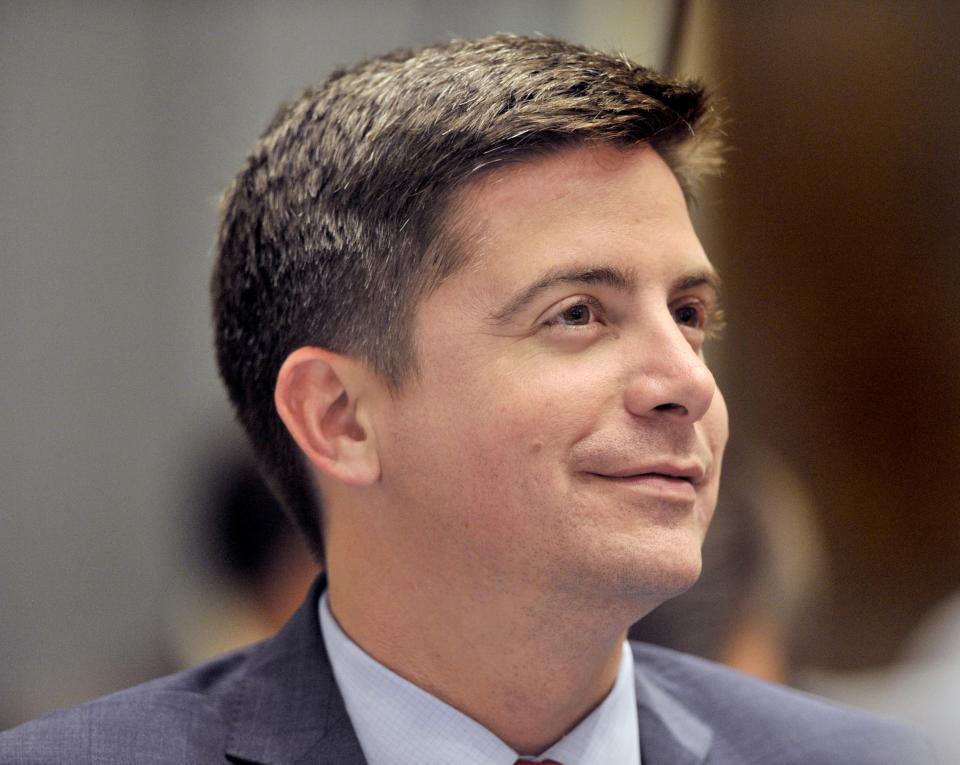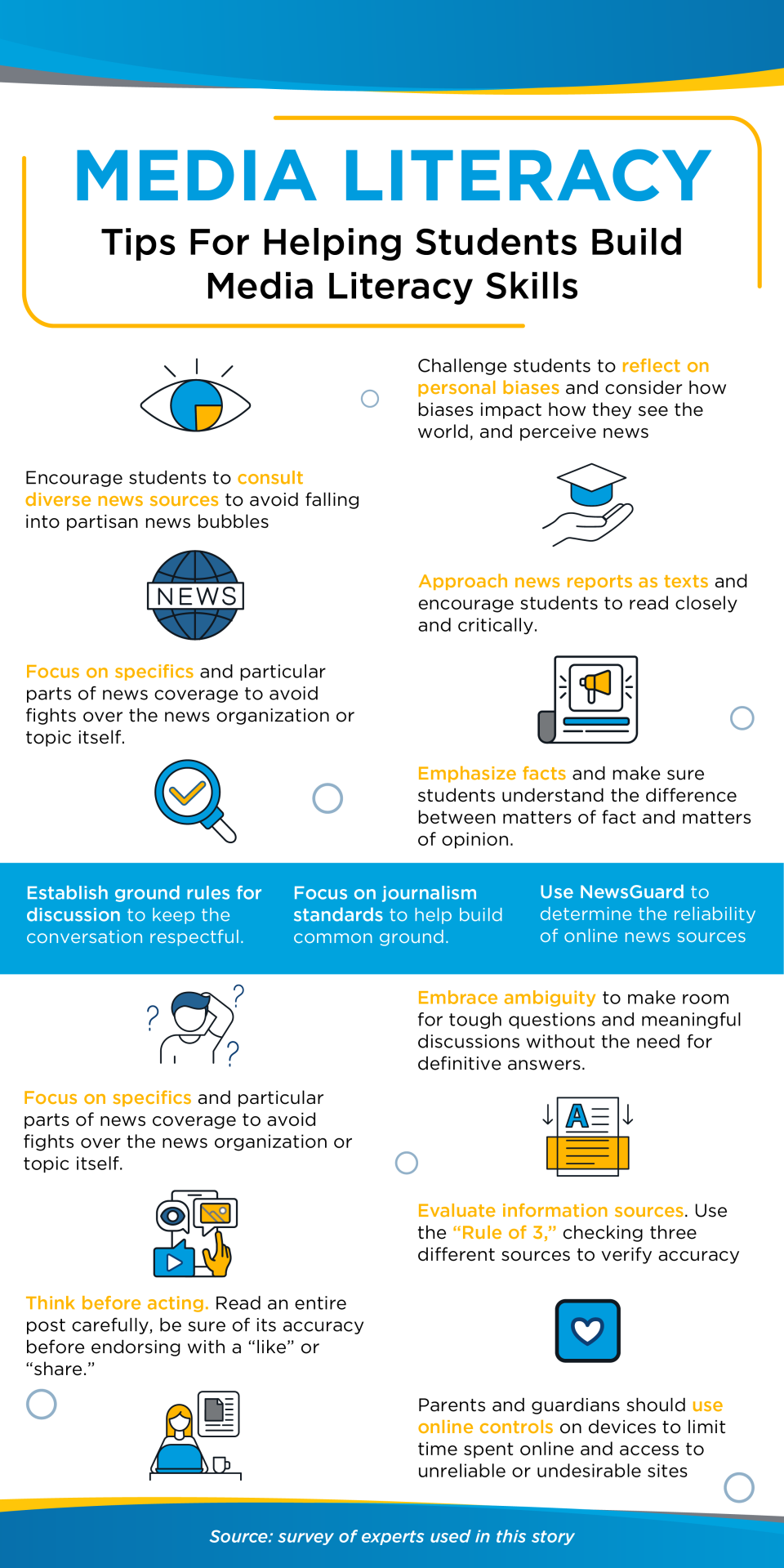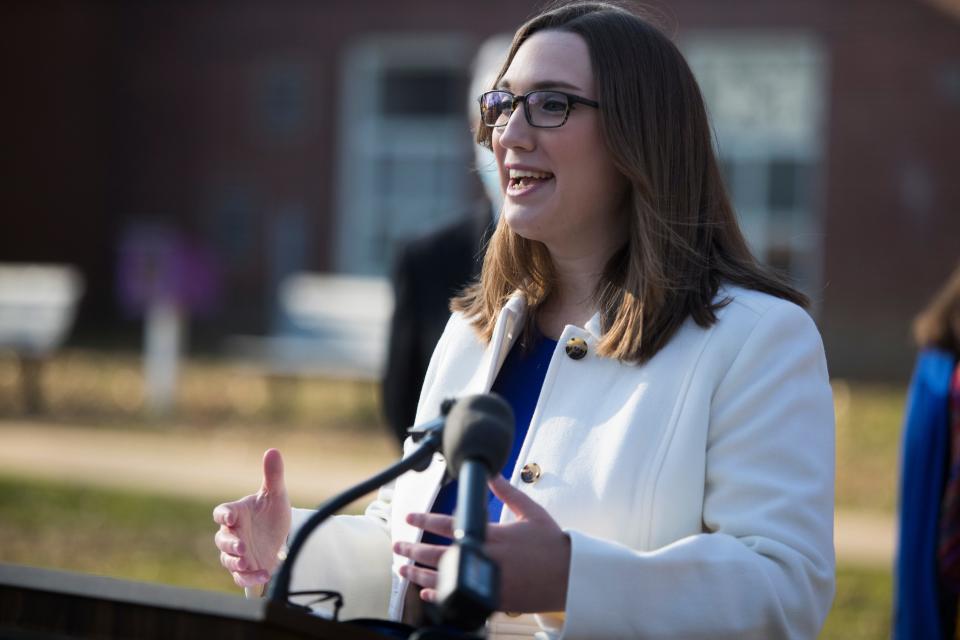Parsing fact from fiction: How Delaware is taking the lead in teaching media literacy
- Oops!Something went wrong.Please try again later.
This story was produced by the Delaware Journalism Collaborative, a partnership of local news and community organizations working to bridge divides statewide that includes Delaware Public Media. Learn more at ljidelaware.org/collaborative.
For years, generations even, teachers have been showing their students how to become informed citizens.
The instruction hasn’t always been explicit and direct, but it has been part of countless lessons. Middle and high school teachers, in assigning a research project, typically remind the class to check their sources, consider the expertise of those sources and be aware that there could be conflicting opinions on their report topic.
In today’s digital world, the internet has multiplied exponentially the sources of information and, with it, the challenges of verifying what is accurate. Students and adults alike are finding it harder to distinguish between reality and fiction, between fact and opinion.
Delaware appears to be taking a leading role among the states in establishing media literacy standards for students in its public schools.
According to a report published in February by Media Literacy Now, a national advocacy organization, Delaware and New Jersey are the only two states that require not only schools to include media literacy instruction in K-12 classrooms but also that their state education agency creates those standards.
“Delaware set a new high bar” with the passage last year of Senate Bill 195, which established those requirements, the Media Literacy Now report stated.
The standards, however, won’t find their way into classrooms until the start of the 2024-25 school year. The State Board of Education received a preview of the standards at its Aug. 10 meeting and is expected to vote on whether to approve them when it meets on Sept. 21.
“The ability to evaluate information is critical to being an involved citizen. Education is the key to developing people who are ready to be active in civic life,” says Brittney Smith, senior manager of education partnerships for the News Literacy Project, which supports teachers and education agencies in all 50 states.
“The intent of the bill is to teach kids to think for themselves,” says state Rep. Bryan Shupe, R-Milford, who cosponsored the legislation with state Sen. Sarah McBride, D-Wilmington.

Delaware educators and national experts agree that giving students a solid grounding in media literacy can be a step toward reducing polarization in society at large.
“We’re choosing outrage, tribalism, harassment and conspiracy theories over the truth. We have to shore up public resistance,” Jonathan Rauch, author of “The Constitution of Knowledge: A Defense of Truth,” said in an interview.
“There is no downside to making critical thinking part of the curriculum,” he said.
“Our challenge is to adopt standards for students, but students go home and talk to their families about what they did in school. Anytime families are talking about subjects discussed in school, that’s a good thing,” says Alyssa Moore, state Department of Education associate for digital learning and a leader of the statewide task force that is developing the standards.
“What is taught will filter up to parents – absolutely,” says Tyeisha Grier, a parent advocate and community organizer from Smyrna.
What does Senate Bill 195 require?
The legislation, titled “The Digital Citizenship Education Act,” passed both houses of the General Assembly in 2022, and Gov. John Carney signed it into law last Aug. 29. The yes votes came from all the Democrats in both chambers and three House Republicans – Shupe plus Kevin Hensley, R-Odessa/Port Penn, and Jeff Spiegelman, R-Clayton.
It requires the state Department of Education to adopt evidence-based media literacy standards that are age-appropriate for kindergarten through 12th grade and address appropriate, responsible and healthy online behavior, including, among other things, acceptable use of online platforms, the negative impact of inappropriate technology use, identifying credible sources of information, developing critical thinking skills, identifying the purpose of media messages and issues associated with cybersafety, cyberbullying and hate speech.
What do the key terms mean?
S.B. 195 includes these definitions:

“Media literacy” means the ability to access, analyze, evaluate, create and take action with all forms of communication, and encompasses the foundational skills of digital citizenship and internet safety, including the norms of appropriate, responsible, ethical and healthy behavior, and cyberbullying prevention.
“Digital citizenship” means the diverse set of skills related to current technology and social media, including the norms of appropriate, responsible and healthy behavior.
LITERACY: How many libraries does Wilmington need? Residents, Delaware officials may disagree
What’s in the proposed standards?
A task force that includes Department of Education curriculum, instruction and professional development staff, school district and charter school librarians and instructional technology specialists, state librarian Annie Norman and State Board of Education member Deb Stevens began researching the proposed standards in September 2022.
The draft standards, taking up 16 pages in a spreadsheet format, combine standards from two organizations of experts, the International Society for Technology in Education and the American Association of School Librarians, with existing state standards in English Language Arts, history and social studies, science and technical subjects.
They were assembled, Moore said, after reviewing comparable guidelines from one other nation (Finland) and at least 13 states (Arizona, Connecticut, Louisiana, Massachusetts, California, Indiana, Maryland, Michigan, New York, New Jersey, Ohio, Pennsylvania and Washington). “There were things to learn and glean from all of them. Some focused on media literacy, others on digital citizenship. Our legislation does both,” she said.
The standards are broken down by grade level – elementary, middle school and high school – but in many cases, the same wording applies to each grouping. Much of the wording in the standards is heavy with educational jargon.
For example, to meet the legislation’s requirement concerning understanding the purpose and acceptable use of different social media platforms, one of the AASL standards applicable to the entire K-12 spectrum reads: “Learners exchange information resources within and beyond their learning community by: Contributing to collaboratively constructed information sites by ethically using and reproducing others’ work.”

While the language of the standards may prove challenging to those outside the education community, the topics they cover are comprehensive. The skills students should acquire include:
Engaging in positive, safe, legal and ethical behavior when using technology.
Using a variety of communication tools and resources.
Managing personal data to maintain digital privacy ad security.
Evaluating the accuracy, perspective, credibility and relevance of information.
Making critical choices about information sources to use.
Questioning and assessing the validity and accuracy of information.
Establishing connections with other learners.
Using collaborative technologies to work with others to investigate solutions.
Using technology, including the internet, to produce and publish writing and to collaborate with others.
Recognizing target marketing strategies and persuasion techniques.
Interacting with learners who reflect a range of perspectives.
Collecting information representing diverse perspectives.
Evaluating a speaker’s point of view, reasoning and use of evidence.
Exhibiting empathy with a tolerance for diverse ideas.
While most of the standards are the same for the three grade groupings, the instruction will necessarily be delivered differently, depending on the student’s age. All these topics won’t be presented to first graders, for example, but younger students should be exposed to each of the standards by fifth grade. The difference would be in the resources, the discussions, the lesson themes, Moore says, using situations “that are ‘real world’ to the grade levels at a particular time.”
“With the little ones, it’s teaching not to accept messages from strangers. For the older ones, it’s how to know if information is true, how to get away from fake news,” says Bonnie Gaus, longtime librarian at McVey Elementary in the Christina School District.
How will the standards be implemented?
At the school level, both in districts and charter schools, the expectation is that the instruction will most often be folded into the current curriculum, so there won’t be entirely new classes devoted to digital citizenship and media literacy.
In many districts, elementary school librarians, who have been trained to teach children basic research skills, have incorporated lessons on computer use and internet topics into their classes in recent years. With the new standards, librarians and others responsible for teaching digital basics will have to increase their emphasis on the items mandated in the standards.
Similarly, in middle schools and high schools, teachers who assign research papers – primarily those in English and social studies – will most likely have the greatest responsibility for ensuring their students understand the new standards.
“There’s a lot of overlap with language arts and social studies,” says Christina Scheffel, an instructional technology specialist with the Indian River School District. “We’re going to our content specialists and asking them to consider how to include social media on top of what you’re already doing.”
In the Colonial School District, “the lessons for kindergarten through fifth grades are straightforward, taught by librarians and media specialists,” says Jeff Menzer, the district superintendent. “At the secondary level, it’s more in the English language arts and social studies curriculum.”
STANDARDIZED TESTING: What works? Delaware’s Lake Forest educators discuss growth in their test scores
North vs. South; left vs. right. Any problems here?
In a polarized society, and in a state like Delaware where downstate residents tend to be conservative and those in the north tend to be moderate to liberal, it would be understandable to have some concern about whether the standards could be taught consistently in all areas of the state.
McBride, considered one of the more progressive members of the state Senate, is not anticipating problems but acknowledges that issues could arise.

“A lot of the curriculum will be woven through subjects currently taught. It would be apolitical and nonideological. It shouldn’t raise the specter of opposition,” McBride says. But, she adds, “we live in politically charged times. We’re unable to predict what someone will latch onto and make a mountain out of a molehill.”
“There may be some differences in curriculum from north to south, but the intent of the bill is to teach kids to think for themselves,” says Shupe, the Milford Republican. “If the districts take that to heart, it should be essentially the same across the state.”
“This isn’t about pushing one political agenda or another. It’s about getting people to think critically about what they see,” says Scheffel, the Indian River technology professional.
“Your curriculum teams have to be mindful of and sensitive to their audiences,” says Menzer, the Colonial superintendent.
Smith, the News Literacy Project partnerships manager, says that getting students to learn how to think critically should start with educators choosing discussion topics that are less likely to trigger polarization.
For example, having middle schoolers discuss or research whether it’s essential to earn a four-year college degree can help them recognize differing viewpoints without triggering as much potential polarization as, say, debating immigration policy or the 2020 election outcome.
Both Smith and Rauch, the author, say it’s important to get students to reflect on their personal biases and to seek information outside their comfort zones.
“We’re all inclined to read and view only the stuff that supports our biases,” Rauch says. “We have to push ourselves to look at sources out of the way from where we usually look.”
What parents are saying
“Many parents lack digital literacy, and that affects their children,” says parent advocate Tyeisha Grier, whose son is entering his junior year at Caesar Rodney High School. By implementing statewide standards, she says, “we have an opportunity to do for youths what some parents cannot do.”
The ability of students to finesse controls on social media sites is also troubling to some parents. “All these platforms have workarounds and the kids can figure them out,” says Donyale Hall of Dover, a mother of 10, ranging from a 5-year-old through high school graduates.
Children have long had to battle peer pressure, “and the struggle is a little different now because parents are not tech savvy,” she says.
MAKING A DIFFERENCE: Neighborhood nuisance property in New Castle now home for former foster children
Just as schools had to educate many parents on the basics of online instruction three years ago at the start of the COVID-19 pandemic, they are now facing the challenge of adding digital literacy and security themes to their messaging. Last year Indian River tried organizing events for parents geared specifically to those topics but drew “zero interest,” Scheffel said. The district has done better, she said, by setting up tables and distributing flyers at other activities that are more likely to attract parents, like one on multilingual diversity.
Hall says that schools much reach beyond their walls, and beyond their basic constituencies. “You need to work with community leaders, with faith leaders,” she says.
“With digital, there are so many subtle things that anyone could easily misunderstand,” says Yunfei Lou, a father of two elementary students who recently was elected to the board of education in the Christina School District. “Many parents are very concerned.”
The addition of digital tools to individuals’ communications toolsets multiplies the possibilities of misunderstandings and arguments, Hall says. “I tell my kids that it takes two people to have an argument. Don’t respond to the person [who tries to pick a fight online].”
Lou is confident that increasing digital literacy within today’s student population can have an impact on decreasing polarization within society overall.
“It’s not just teaching facts. It’s having the ability to critically think that will mitigate radicalization and polarization,” he says. “We have to teach children about conflict resolution and setting boundaries.”
This article originally appeared on Delaware News Journal: Delaware takes leading role in teaching students media literacy

